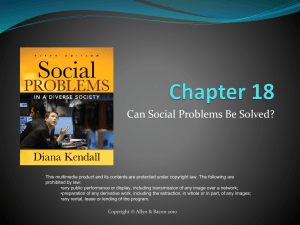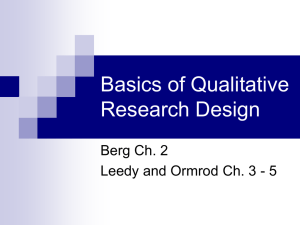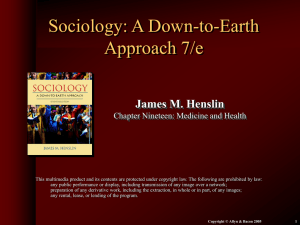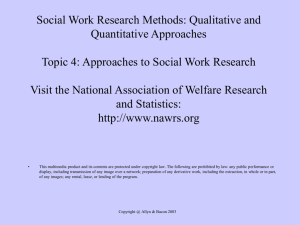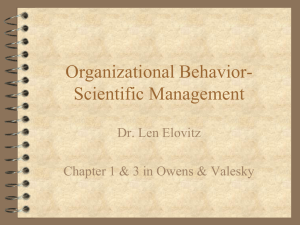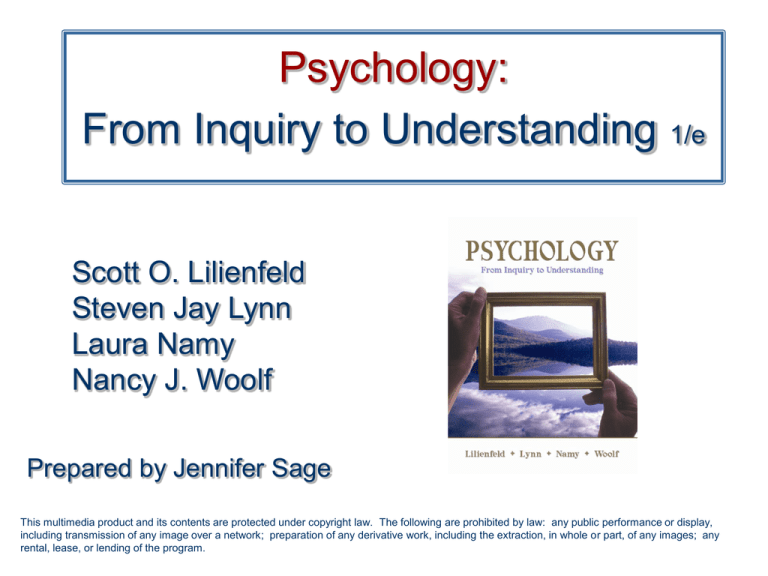
Psychology:
From Inquiry to Understanding 1/e
Scott O. Lilienfeld
Steven Jay Lynn
Laura Namy
Nancy J. Woolf
Prepared by Jennifer Sage
This multimedia product and its contents are protected under copyright law. The following are prohibited by law: any public performance or display,
including transmission of any image over a network; preparation of any derivative work, including the extraction, in whole or part, of any images; any
rental, lease, or lending of the program.
Chapter 9:
Intelligence and IQ Testing
Controversy and Consensus
Copyright © Allyn & Bacon 2009
Lecture Preview
Review of Intelligence
Examine controversies surrounding
intelligence
Explore the nature and nurture of
intelligence
Discuss sex and race differences in
intelligence
Explore other dimensions of intellect
Copyright © Allyn & Bacon 2009
What is intelligence?
Sir Francis Galton
(1884) - intelligence
is a byproduct of
sensory capacity
Clark Wissler (1901) various senses are
uncorrelated with one
another and with
school performance
Copyright © Allyn & Bacon 2009
Intelligence as Abstract Thinking
The French government wanted to objectively
identify slow and fast learners
Alfred Binet and Henri Simon (1904) - first
intelligence test
Diverse content:
• object naming
• word meanings
• drawing pictures from memory
• completing incomplete sentences
• constructing a sentence from three words
Copyright © Allyn & Bacon 2009
Intelligence as Abstract Thinking
In 1921, a forum of 14 experts agreed that
intelligence consists of the abilities to:
Reason abstractly
Adapt to novel environmental circumstances
Acquire knowledge
Benefit from experience
Americans tend to view intelligence as:
the capacity to reason well and learn quickly (“to think
on one’s feet”)
the ability to amass large amounts of knowledge
Copyright © Allyn & Bacon 2009
The little letter g
Unlike Galton’s prior sensory
measures, the measures on
the intelligence test
correlated with one another
Charles Spearman (1927) these correlations suggest a
single common factor across
all aspects of mental ability:
g for general intelligence
Spearman called the specific
abilities s factors
Copyright © Allyn & Bacon 2009
Fluid and Crystallized Intelligence
Later research found that g wasn’t as uniform
as Spearman suggested; some measures were
more highly related than others
Raymond Cattell (1971) distinguished two types
of intelligence
Fluid Intelligence - the capacity to learn new
problems
Crystallized Intelligence - the accumulated
knowledge of the world over time
Fluid abilities are more related to g and are
more likely to decline with age
Copyright © Allyn & Bacon 2009
Multiple Intelligences
Howard Gardner (1983) alternatively suggests
there are eight separate intelligences
• Evidence from autistic savants
Linguistic
Logico-mathematical
Spatial
Musical
Bodily-kinesthetic
Interpersonal
Intrapersonal
Naturalistic
Copyright © Allyn & Bacon 2009
Sternberg’s Triarchic Model
Robert Sternberg’s (1983) model posits the existence of
three types of intelligence:
Analytical Intelligence: ability to reason logically
Practical Intelligence: ability to solve real-world
problems, especially people problems
Creative Intelligence: ability to come up with novel
and effective answers to questions
Modern intelligence tests don’t typically assess
practical intelligence
Sternberg’s theory is controversial, as practical
intelligence may not be independent of g
Copyright © Allyn & Bacon 2009
Biological Basis
of Intelligence
Brain size is weakly correlated with
intelligence
Cerebral cortex development is slower in
gifted children
Intelligence is intimately involved with
working and short-term memory
Intelligence is located throughout the brain,
but the prefrontal cortex is especially
implicated
Copyright © Allyn & Bacon 2009
Biological Basis
of Intelligence
In some functional brain imaging studies,
brain activity is lower in the highly
intelligent (the brain may be more efficient
or require less effort)
People with higher intelligence also react
more quickly (reaction time)
Working memory ability and intelligence
are highly related
Copyright © Allyn & Bacon 2009
The Intelligence Quotient (IQ)
Wilhelm Stern (1912):
IQ = mental age ÷ chronological age x 100
Wechsler (1939):
deviation IQ = expression of IQ relative to
same aged peers (eliminated age effects with
Stern’s formula)
Average IQ = 100, the standard deviation is 15.
68% of the population is between 85 - 115
Copyright © Allyn & Bacon 2009
IQ Testing Today: The Wechsler
Adult Intelligence Scale (WAIS-III)
Copyright © Allyn & Bacon 2009
Other IQ Tests
Childhood IQ Tests
Wechsler Intelligence Scale for Children (WISC-III)
Weschler Primary and Preschool Scale of
Intelligence (WPPSI-III)
Culture-Fair Tests attempt to eliminate biases for
people who speak language differently than how the
WAIS is written
Raven’s Progressive Matrices = most widely used
Standardized Tests, such as the SAT, correlate highly
(0.7 - 0.8) with IQ tests, but attempt to emphasize
achievement
Copyright © Allyn & Bacon 2009
Raven’s Progressive Matrices
Copyright © Allyn & Bacon 2009
Reliability and Validity of IQ
IQ is mostly stable across age and across
retesting
Prior to age 3 IQ does not predict adult IQ
IQ can predict school grades when the entire
range is considered, but not at the top end of
the scores
IQ can predict life outcomes including health
and accidents, but because it is confounded
with social class, it is difficult to tease apart
Copyright © Allyn & Bacon 2009
The Bell Curve
Copyright © Allyn & Bacon 2009
From Mental Retardation to Genius
Mental Retardation involves:
1. Onset prior to adulthood
2. IQ ≤ 70
3. Impaired adaptive functioning
Mild Retardation makes up 85% of retardation
cases, and most can be mainstreamed into
regular classrooms
Over 200 different causes are known, including
fetal alcohol syndrome, fragile X syndrome, and
Down syndrome
Copyright © Allyn & Bacon 2009
IQ Ranges Among Professions
Copyright © Allyn & Bacon 2009
True or False?
IQ is located in one part of the brain.
FALSE. It is most closely associated with
prefrontal cortex, but it seems to be distributed
throughout the brain.
Copyright © Allyn & Bacon 2009
Genius and
Exceptional Intelligence
Lewis Terman (1959) studied 1,500 students with
IQs of about 135 or higher
Findings from the “Termites” disputed many
popular stereotypes of the highly intelligent:
Most had above average health, and were taller
and heavier than the general population
They were highly successful in adulthood
They had lower rates of mental illness
The best predictor of exceptional career success in
musicians is the amount of practice
Copyright © Allyn & Bacon 2009
Genetic and Environmental
Influences on IQ
Family Studies
Twin Studies
Correlations between siblings are approximately 0.5
and cousins are about 0.15
MZ twins correlate approximately 0.7-0.8 whereas
DZ correlation is approximately 0.3 to 0.4
Support an estimate of heritability from 40 to 70%
Adoption Studies
IQs of adopted children tend to be similar to the IQs
of their biological parents, and this effect tends to
increase with age
Copyright © Allyn & Bacon 2009
Environmental Influences on IQ
Birth Order
Schooling
Robert Zajonc (1976) - IQ decreases with increasing birth
order (later studies suggested this was due to families with
low IQs tending to have more children)
Number of school years correlates with IQ (0.5 - 0.6)
Students who drop out of school end up with lower IQs
than those who stay in, even when starting out with the
same IQ
Early Intervention
Head Start program produces changes in IQ that last a few
years
Copyright © Allyn & Bacon 2009
Environmental Influences on IQ
Expectancy Effects
Robert Rosenthal and Lenore Jacobson gave fake
data to teachers suggesting some students would
experience large increases in IQ
These randomly selected students experienced an
IQ gain of around 4 points
Poverty
Arthur Jensen (1977) studied poor families in
Georgia and found that children experienced a 1.5
IQ point drop per year
Poverty could be associated with malnutrition,
exposure to lead, and less breast-feeding
Copyright © Allyn & Bacon 2009
The Flynn Effect
Copyright © Allyn & Bacon 2009
Sex differences in IQ
Copyright © Allyn & Bacon 2009
Sex Differences in IQ
Few studies have found
differences in average IQ
Men tend to have a wider
distribution of IQ
Copyright © Allyn & Bacon 2009
Sex Differences in Specific
Mental Abilities
Differences tend to be small:
Women do better on some verbal tasks,
including spelling and writing
Women talk more than men
(F = 20,000 words per day; M = 7,000)
Men tend to do better on spatial tasks,
especially mental rotation
Sex differences could be due to environment
Copyright © Allyn & Bacon 2009
Mental rotation task
Copyright © Allyn & Bacon 2009
Race Differences in IQ
On average, Hispanic and African
Americans score lower than Caucasians,
and Asian Americans tend to score higher
African Americans have been reported to
score up to 15 points lower
One common interpretation: inferior
schooling and other cultural disadvantages
Copyright © Allyn & Bacon 2009
Race Differences in IQ:
Alternative Interpretations
Test Bias: Items on the test may be based
on Caucasian language and culture
Copyright © Allyn & Bacon 2009
Causes of Racial Differences in IQ
Within-group heritability and Between-group heritability
One study compared children from African American
soldiers–Caucasian German mothers with children from
Caucasian American soldiers–Caucasian German
mothers and IQ was found to be the same
White European ancestry among African Americans does
not predict higher IQ
African American children that are cross-racially adopted
show IQs above average Caucasian American children
Overall, the data suggests that poverty may be the
source of IQ differences, rather than genetics
Copyright © Allyn & Bacon 2009
Other Dimensions of Intellect
Creativity
Divergent thinking: the capacity to generate many
solutions to problems
Convergent thinking: the capacity to find the single
best solution to a given problem
Creativity and intelligence are related, but not all
intelligent people are creative
Personality
IQ is associated with openness to experience:
curiosity for exploring new things
Copyright © Allyn & Bacon 2009
Other Dimensions of Intellect
Emotional Intelligence (EQ): the ability to
understand our emotions and those of others
High IQ does not guarantee one does not have
strange beliefs
EQ involves the ability to use this knowledge in our
everyday lives
Those with high IQ may be vulnerable to a sense of
omniscience
Wisdom: the application of intelligence toward
a common good
Copyright © Allyn & Bacon 2009
Critical Thinking Question
If there is an IQ score difference, on average, between African
Americans and Caucasians, should IQ tests (or similar tests) be
used to place African Americans? Is it right, or wrong, or does it
depend on us figuring out why the difference is there?
In some states, including California, it has been deemed illegal to
use IQ tests to place African Americans, because IQ tests may be
racially biased, and because a disproportionate number of blacks
are categorized as mentally retarded. However, this is based on
evidence that every IQ test is racially biased, and studies do not
support this. Ironically, in California, schools often use IQ tests but
do not call it IQ or intelligence without a waiver from African
American parents.
Copyright © Allyn & Bacon 2009
Critical Thinking Question
Since IQ predicts so many different things, doesn’t that
automatically imply it is a valid measure of natural ability to do
things well?
Not really:
If you score well you may get the best teachers and best school
placements (or colleges) leading to future success
You may feel better about yourself and this could be the cause of the
success
High IQ scores could be confounded with something else that predicts
success (good parenting, disposition, good test taking, low anxiety,
etc.).
Correlational research cannot really answer this question. Since we
cannot manipulate natural ability or IQ directly, we need to consider
what is the best research we can do for each kind of question, rather
than applying an arbitrary high standard for research.
Copyright © Allyn & Bacon 2009
Critical Thinking Question
IQ is frequently used as an instrument of placement in special
education. If a child has a language delay, is IQ a valid
measurement of intelligence? What about in an aphasic? What
about when Raven’s test is used?
IQ testing in the face of a language disruption is problematic. The
tests require good language ability, in particular, an ability to listen
to instructions. For example, although the WPPSI/WISC and
Raven’s are highly correlated in normal children, children with
autism score much higher on the Raven’s than on the
WPPSI/WISC. However, even the Raven’s test requires a level of
self-control and ability to follow instructions that may interfere with
the measurement of intelligence in some individuals.
Copyright © Allyn & Bacon 2009




